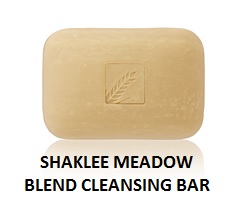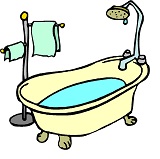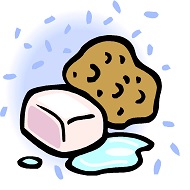
CHAPTER XVII: Hints on Bathing
 I have already referred to the value of accelerating the activity of the functions of the skin. The ordinary practice of bathing is of great importance in this connection. Many diseases would be prevented if the skin were thoroughly cleansed with due regularity.
I have already referred to the value of accelerating the activity of the functions of the skin. The ordinary practice of bathing is of great importance in this connection. Many diseases would be prevented if the skin were thoroughly cleansed with due regularity.
Probably a weekly soap-and-water bath is all that is absolutely essential for cleanliness if one follows a daily regimen which will maintain a condition of internal cleanliness. In fact, the cleansing of the external body is not required with such frequency if one secures sufficient muscular exercise and follows a dietetic and general regimen that will guarantee sufficient activity of all the eliminative functions; but if one neglects to employ other measures that help to maintain the purity of the blood and the activity of the skin, then more frequent baths are required to insure cleanliness. It has been my custom to recommend a hot soap-and-water bath once or twice a week, depending upon the individual requirements, and a daily cold bath. The hot bath is to be used as a cleansing agent while the cold bath is a tonic exclusively. A regimen of this sort will usually be satisfactory where one is taking a general system of exercise nearly every day which will insure a certain amount of internal functional activity. Note, however, that the cold bath, though of some value, is not necessary, when following the hot-water-drinking regimen.
COLD BATHS
There's controversy as to whether or not cold baths are really beneficial, since in some cases, they have proved harmful. Under such circumstances the failure to secure good results may have been due to ignorance of the principles involved and to the lack of vitality essential to reaction from the shock of the cold water. A great deal depends upon the manner in which the cold bath is taken and the physical condition of the individual taking it.
A cold bath is a strong stimulant to the entire circulatory system, provided one can recuperate with a feeling of warmth immediately thereafter. If this feeling of warmth does not follow, if you feel cold, uncomfortable, nervous and trembling for some time after the bath, the shock has been too severe and is not of advantage. Under such circumstances it is better either to avoid the bath altogether or else take more exercise in order more thoroughly to warm the body before taking the bath. Usually if one is warm before bathing and if the cold bath is taken in a warm room it is easy to recuperate from it. Another good suggestion in a case of this kind is to decrease the duration of the bath. Do not stay in the water too long. In some cases what is sometimes called a hand bath may be advantageous. This bath is taken by merely wetting the hands several times in the water and applying the moist palms to all parts of the body. The familiar sponge bath, so-called, using either a sponge or a washcloth, is often advised, although the hand bath just mentioned is even easier to take.
DRY FRICTION BATHING
 I have also frequently recommended the use of the dry friction bath, following exercise, as a means of preparing the body for a cold bath. I have already referred to these dry friction rubbings as a means of accelerating the activity of the skin. This friction bath will, in nearly all cases, warm the skin sufficiently to enable one thoroughly to enjoy the cold water. In fact, this friction is to a cold bath what appetite is to eating. You should enjoy your meals and you should enjoy your cold bath. It is only when the cold bath is a pleasure that it is a benefit. If you dread it, if the mere thought of taking a cold bath brings a shudder, it will not be of benefit to you. You should feel sufficiently vigorous and vital really to enjoy it. A friction bath will put your skin in a condition where the cold water will "feel good." Exercise that thoroughly warms the body will naturally have the same effect.
I have also frequently recommended the use of the dry friction bath, following exercise, as a means of preparing the body for a cold bath. I have already referred to these dry friction rubbings as a means of accelerating the activity of the skin. This friction bath will, in nearly all cases, warm the skin sufficiently to enable one thoroughly to enjoy the cold water. In fact, this friction is to a cold bath what appetite is to eating. You should enjoy your meals and you should enjoy your cold bath. It is only when the cold bath is a pleasure that it is a benefit. If you dread it, if the mere thought of taking a cold bath brings a shudder, it will not be of benefit to you. You should feel sufficiently vigorous and vital really to enjoy it. A friction bath will put your skin in a condition where the cold water will "feel good." Exercise that thoroughly warms the body will naturally have the same effect.
The statement has often been made that to take a cold bath when overheated is dangerous just as it would be to drink a large amount of very cold water when overheated. It is said that one should wait until he cools off before taking the cold drink or cold plunge. To a limited extent there is wisdom in this advice, especially as it applies to getting into cold water when overheated and then remaining there until you have cooled off. Such quick cooling is certainly dangerous, just as drinking too much very cold water is dangerous.
On the other hand, a short quick cold bath under such circumstances is not dangerous but highly advisable.
The danger in such cases lies in remaining in the water until chilled. As a matter of fact, when one is overheated he can thoroughly enjoy the cold water. You will recuperate quickly under such conditions and you can better afford to take a cold bath when very hot than when chilled. Do not attempt cold bathing when you have "goose flesh" or when your hands and feet are cold. Under such circumstances the hand bath is preferable. It is always best when overheated to cool off gradually, and after the bath taken under such circumstances to use a sweater or bath robe or other covering to insure the desired result. When one is overheated, it is best to drink water lukewarm or hot or only moderately cool. If you drink lukewarm water when overheated you can take any quantity desired.
As previously stated, however, I would like to point out that if you are carrying out the regimen of hot-water-drinking and exercise previously referred to, a daily cold bath is not at all necessary. It might be taken with benefit if you are vigorous, but by flushing the body with a large amount of liquid according to the plan I have suggested virtually all functions of the body, including that of the skin itself, are accelerated in their activities. Under such circumstances less bathing is required, at least for the purpose of maintaining proper circulation and functional activity. Therefore the question may be left open for each individual to determine. One may take a cold bath or not, just as he may desire, while following the regimen referred to.
Many who enjoy a cold bath are inclined to stay in the water too long. In this way one may deprive himself of some of the benefits that might be derived therefrom. It is safer to limit the cold bath to a short period. The chief value lies in the reaction. If this is secured then all is well. The first effect of the cold water is to contract the tissues at the surface of the body, including the blood vessels, thus forcing the blood away from the skin. In the reaction the blood is brought back to the surface in large quantities, producing the glow that is noticed after a successful cold bath. After a short plunge or quick shower this reaction should be secured. By staying in the water too long one may overtax his vitality and become chilled. When taking a plunge simply allow the water to come in contact with all parts of the body; then immediately get out.
 If the recuperative powers are defective you should not use cold water, though the hand bath as described should be satisfactory. In such cases, however, by maintaining the warmth of the feet you can recuperate quickly and easily. If you will stand with your feet in hot water while taking the hand bath, or sponge bath, or when using a hand spray in the bathtub, recuperation will be easier. When the feet are warm the circulation is more easily maintained. Following a hot bath, the hand spray can be used for the shower, applying the water quickly to all parts of the body before getting out of the tub. One should always use a cold sponge, spray, or shower, after a hot bath to close the pores. Then rub dry quickly and vigorously with a Turkish towel.
If the recuperative powers are defective you should not use cold water, though the hand bath as described should be satisfactory. In such cases, however, by maintaining the warmth of the feet you can recuperate quickly and easily. If you will stand with your feet in hot water while taking the hand bath, or sponge bath, or when using a hand spray in the bathtub, recuperation will be easier. When the feet are warm the circulation is more easily maintained. Following a hot bath, the hand spray can be used for the shower, applying the water quickly to all parts of the body before getting out of the tub. One should always use a cold sponge, spray, or shower, after a hot bath to close the pores. Then rub dry quickly and vigorously with a Turkish towel.
A sitz bath is recommended instead of a full tub bath, as it is a tonic of great value through its effect upon certain sympathetic nerve centers.
This bath consists in immersing only the central part of the body, namely, the hips and abdomen. Special sitz tubs are manufactured, but one can use an ordinary wash tub. An ordinary bathtub will serve if filled with water about six to ten inches deep. Put the feet on the edge of the tub and lower the hips down into the water. This bath is especially valuable as a means of stimulating functional activity. The colder the water for the sitz bath the better, although if one is lacking in vitality, it should not be below 70 degrees Fahrenheit. A hot sitz bath may sometimes be suggested for inflammatory and painful conditions in the pelvic region. In inflammation of the bladder, for instance, it is valuable.
When taking hot baths for cleansing purposes the soap used is of some importance; especially so if the skin is thin or too dry. In such cases strong soaps are injurious, although their effect may be overcome to some extent by rubbing the body after the bath with a very little bit of olive oil. I would suggest, however, the use of a pure vegetable oil soap, such as castile, which is one of the best examples of a vegetable soap. This soap may be suggested in all cases, but it is particularly important when the skin is thin or dry. Very frequently dryness of skin is noticed in those of very light complexion. In the preceding chapter on Blood Purification I referred to a hot bath for the purpose of rapidly eliminating poisons and wastes in the body. An ordinary warm bath for cleansing purposes need not be taken at such a high temperature. In other words a soap-and-water bath will be perfectly satisfactory at a temperature of 103 to 105 degrees F. and need not occupy more than a very few minutes, whereas the hot bath referred to for the special purpose of blood purification may be of longer duration and of a much higher temperature, running up to 110 or 115 degrees Fahrenheit.
There is another type of warm bath, however, which is of special value in many cases. This is what I have sometimes termed a neutral bath, inasmuch as it is neither hot nor cold. This is a bath at about the temperature of the body, that is to say, 95 to 98 degrees Fahrenheit. One should use a bath thermometer to be sure of the right temperature. This neutral bath has a sedative or quieting effect upon the nerves through its effect upon the innumerable nerve endings in the skin. It is neither hot nor cold, neither stimulating nor weakening, and one could remain in such a bath for hours without harm. It has a quieting effect upon the nerves and reference has been made to it in the chapter on Sleep as a means of overcoming excitement or nervousness. In attacks of mania it is especially valuable, and is now extensively used in all insane asylums because of its wonderful effect in quieting the nerves. This bath at 98 degrees is also especially commended in the case of severe burns covering a large surface. It is about the only way in which a person suffering from such an extensive burn can be made comfortable. It is also one of the most perfect forms of treatment in a case of that kind. The serious character of the burn depends not so much upon the severity as upon the extent of the surface involved. Therefore, one who has been seriously burned could remain immersed in a bath at 98 degrees F. for many days continuously, or until the skin has had a chance to heal. Immersion in water is a natural condition, for there was a time away back when all the animal life of the earth was found in the water. It was only through special variation in the character of evolution that certain forms of life finally became adapted to a life outside of the water. Therefore, immersion in water, except for the head, is not entirely an unnatural condition.